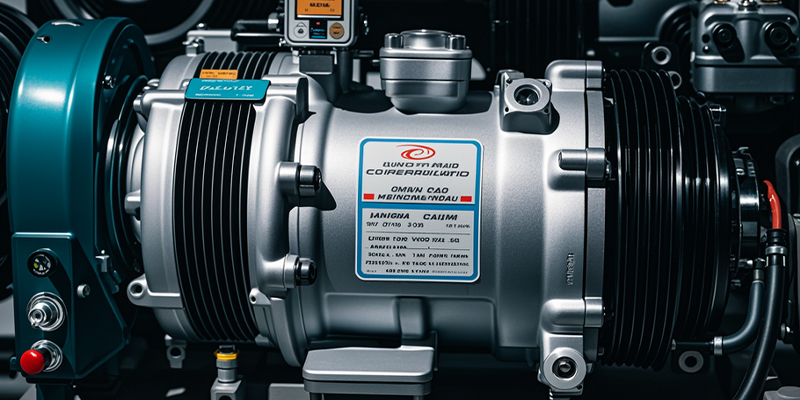
Compressors can generally be divided into reciprocating and rotary types. Common reciprocating compressors include crankshaft connecting rod type and axial piston type, and common rotary compressors include rotary vane type and scroll type.
Folded crankshaft connecting rod compressor:
The working process of this compressor can be divided into four parts, namely compression, exhaust, expansion and suction. When the crankshaft rotates, the piston is driven to reciprocate through the connecting rod, and the working volume composed of the inner wall of the cylinder, the cylinder head and the top surface of the piston will change periodically, thereby playing the role of compressing and transporting the refrigerant in the refrigeration system. The crankshaft connecting rod compressor is the first generation of compressors. It is widely used, has mature manufacturing technology, simple structure, and has low requirements for processing materials and processing technology, and is relatively low in cost. It has strong adaptability, can adapt to a wide range of pressures and cooling capacity requirements, and has strong maintainability. However, the crankshaft connecting rod compressor also has some obvious disadvantages, such as the inability to achieve a high speed, the machine is large and hea
Folding axial piston compressors:
Axial piston compressors can be called the second generation compressors. Common ones include rocker plate or inclined plate compressors, which are the mainstream products in automotive air conditioning compressors. The main components of the inclined plate compressor are the main shaft and the inclined plate. The cylinders are arranged circumferentially with the compressor main shaft as the center, and the piston movement direction is parallel to the compressor main shaft. The pistons of most inclined plate compressors are made into double-headed pistons. For example, in an axial 6-cylinder compressor, 3 cylinders are at the front of the compressor and the other 3 cylinders are at the rear of the compressor. The double-headed pistons slide in front and back in the opposite cylinders. When one end of the piston compresses the refrigerant vapor in the front cylinder, the other end of the piston inhales the refrigerant vapor in the rear cylinder. Each cylinder is equipped with high and low pressure valves, an
Folding rotary vane compressor:
The cylinder shape of the rotary vane compressor is circular and elliptical. In the circular cylinder, the main axis of the rotor has an eccentric distance with the center of the cylinder, so that the rotor is close to the suction and exhaust holes on the inner surface of the cylinder. In the elliptical cylinder, the main axis of the rotor coincides with the center of the ellipse. The blades on the rotor divide the cylinder into several spaces. When the main shaft drives the rotor to rotate one circle, the volume of these spaces changes continuously, and the refrigerant vapor also changes in volume and temperature in these spaces. The rotary vane compressor has no suction valve because the blades can complete the task of sucking and compressing the refrigerant. If there are two blades, there are two exhaust processes for one rotation of the main shaft. The more blades, the smaller the exhaust fluctuation of the compressor. As the third generation compressor, the rotary vane compressor can be made very small
Folding scroll compressor:
This type of compressor can be referred to as the fourth generation compressor. The structure of vortex compressors is mainly divided into two types: dynamic and static and double revolution. At present, the application of dynamic and static turbines is the most common, and their working components are mainly composed of dynamic and static turbines. The structures of dynamic and static turbines are very similar, both consisting of end plates and involute spiral teeth extending from the end plates. The two are eccentrically configured and differ by 180 °. The static turbine is stationary, while the dynamic turbine is constrained by a special anti rotation mechanism and driven by the crankshaft to rotate eccentrically and translate, that is, there is no rotation, only revolution. Spiral compressors have many advantages. For example, the compressor has a small volume and light weight, and the eccentric shaft that drives the turbine can rotate at high speed. Without the intake and exhaust valves, the scroll compressor operates reliably and easily achieves variable speed motion and variable displacement technology. Multiple compression chambers work simultaneously, resulting in a small gas pressure difference between adjacent compression chambers, less gas leakage, and high volumetric efficiency. Vortex compressors are becoming increasingly popular in the field of small-scale refrigeration due to their compact structure, high efficiency and energy saving, low vibration and noise, and reliable operation. Therefore, they have become one of the main directions for the development of compressor technology.
